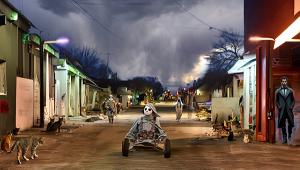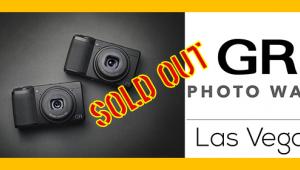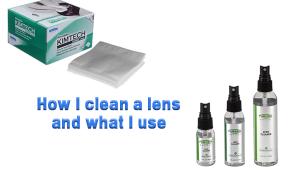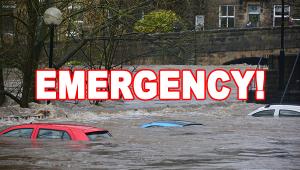Five Things That Are Bad For Cameras

You probably have your own Sandy Hook somewhere close to you. And like ours, it almost certainly is haunted by the same five camera killers.
I'm talking about five of the seemingly benign accoutrements of summer that make even the most hardened camera service managers cringe. They are, in no particular order, Water, Sand, Sunblock, Insect Repellent, and Direct Sun.
Water—"liquid damage" to the service manager—is a major problem, particularly with compact cameras and entry level DSLRs that lack moisture resistant seals. You don’t have to submerse a camera (or lens) to ruin it. A light mist or blast of spray will often do the trick. When water reaches the microscopically close solder traces on the printed circuit boards inside your camera it can wreak havoc. And water often leaves a contaminating residue when it evaporates. Get into the habit of carrying a large plastic garbage bag along with your cameras gear. You never know then a summer shower will appear.
Sand has an uncanny knack for winding up where it doesn't belong and working its way into crevices that resist other forms of dirt. I think it's because sand granules are hard and more-or-less regularly shaped. Think of it this way: a bag full of diamonds will tumble through a tiny opening more readily than a bag full of woodchips. And do more damage, too.
Sunblock is great for protecting skin from UV—or so we're told—but it can be unkind to cameras, particularly lens coatings. Of course, it's never good to leave a fingerprint on a lens, but it's especially bad when that finger has been coated with SPF 30. Don't forget that if you're like most of us, your nose comes in contact with the LCD on your SLR monitor when you focus, so make sure that you never apply zinc oxide or even common sun screen to your nose.
Insect Repellent can contain chemicals that damage smooth, shiny, plastic surfaces—cameras, cell phones and PDAs included. The spray-on variety seems innocuous enough but it lingers on your skin and can easily transfer to your photo gear even hours later. I can't recommend an alternative but I can suggest that you keep the stuff off of your hands as much as humanly possible.
Direct Sun is dangerous on many levels. And it can really make a black camera get hot. Makes you wonder why SLR cameras are not silver-colored anymore…anyway, keep your camera cool—it's easier than it sounds. Simply avoid direct sunlight and hot spots like glove boxes. I have a cheap ($5) collapsible cooler—the size designed to hold a six-pack of soda. It just fits my DSLR with kit lens attached and sits on the floor in the back seat of my car. It protects my camera from bumps and scrapes as well as heat.
Fisheye photo made possible by Sigma. Canon 5D Mk II with Sigma 8mm full-frame 180-degree fisheye.
- Log in or register to post comments

















































